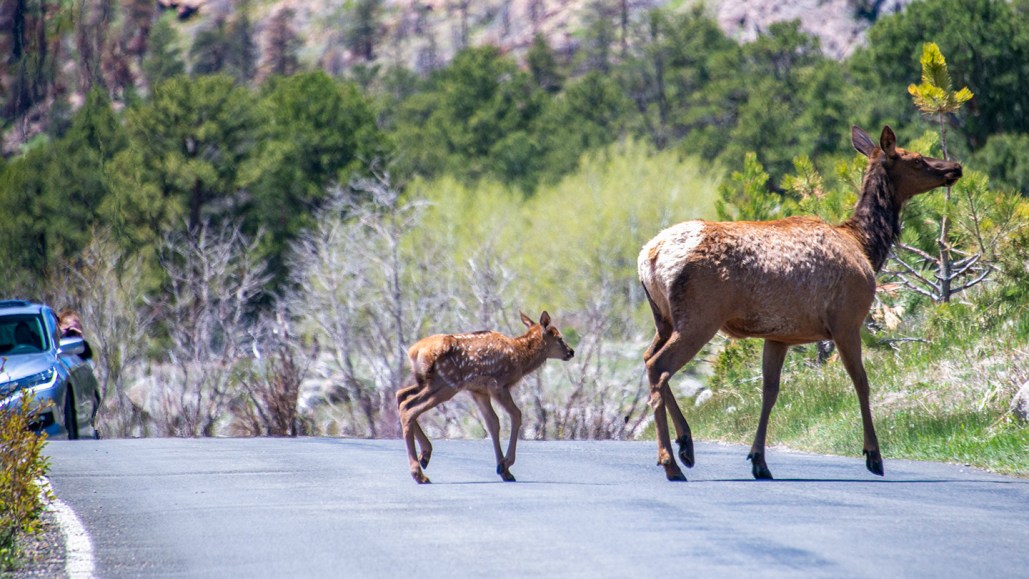Is it possible for humans to contract chronic wasting disease from deer?

The spread of chronic wasting disease (CWD) among deer across the United States is causing alarm due to the potential that this deadly neurological illness could cross over to humans. However, recent research suggests that such a transition may be difficult.
Unlike a virus or bacteria, CWD is caused by a disfigured brain protein known as a prion. Recent research using tiny, lab-grown organs known as organoids backs previous studies which showed that CWD prions do not infect human brain cells.
The six-month study disclosed that brain organoids, when exposed to high doses of prions from white-tailed deer, mule deer, and elk, did not get infected. On the contrary, prions causing Creutzfeldt-Jakob disease in humans quickly infected organoids, which indicates that a considerable species barrier might prevent CWD from crossing from deer to humans, according to findings published in Emerging Infectious Diseases in June 2024.
Bradley Groveman, a biologist at the National Institutes of Health’s Rocky Mountain Laboratories in Hamilton, Mont, stated that this model could help determine the real risk.
However, brain organoids may not entirely replicate the human brain and may lack features that leave them vulnerable to infection. New prion strains can appear, including some that could help deer prions attach to healthy human brain proteins.
Given the risk, continuous evidence-gathering and experiments with new prion strains on organoids are needed, according to Cathryn Haigh, a cell biologist at Rocky Mountain Laboratories. She stated we would never conclusively rule out the risk of human infection.
Deer with CWD are incurable. The disease causes healthy PrP in the brain to contort and clump together, killing brain cells and leading to symptoms like lethargy, clumsiness, loss of fear of people, and drastic weight loss.
As the disease is continuing to spread across North America, there's an increasing concern about the danger that prions from deer, elk, and moose present to humans. CWD was detected in Indiana for the first time in April and in wild deer in California in May. Currently, the disease has spread to 34 U.S. states, parts of Canada, South Korea, and northern Europe since its first discovery in a captive deer from Colorado in 1967.
Debbie McKenzie, a prion biologist at the University of Alberta in Edmonton, Canada, noted that the disease is now more prevalent among deer.
If hunters fail to properly test animals, the likelihood of infected deer meat reaching the consumer market increases. Prions remain unaffected by cooking, unlike bacteria or viruses, suggesting that even cooked meat could pose a danger.
Previous outbreaks of mad cow disease, another prion-related illness, have highlighted the risks of CWD. Chronic wasting disease was initially discovered before mad cow disease, but at that stage, there wasn't a general concern about risks to humans.
Nevertheless, the realization that bovine prions could infect humans brought attention to the potential dangers. Additional studies suggest that while prion transmission between certain species is difficult, it is not impossible.
Yet the prospect of transmission of faulty prions from wildlife to humans remains a big question, Groveman says, particularly because venison is on the menu in North America. Vigilance, experts say, is key to catching any potential transmission early, though there have been some jump scares.
News reports in April put the spotlight on a case report presented at the annual American Academy of Neurology meeting in Denver that described a fatal neurological disease in two hunters. The individuals had a history of consuming deer meat from a population known to have chronic wasting disease. But both likely died of a different prion ailment, Creutzfeldt-Jakob disease, which can arise sporadically, according to both the report and the U.S. Centers for Disease Control and Prevention.
“To date, there have been no reported cases of CWD infection in people,” says epidemiologist Ryan Maddox of the CDC in Atlanta.
While the mad cow prion sickened hundreds of people starting in 1994 — it can take a decade or more for people to show symptoms — the barrier for its transmission into people is also incredibly high, McKenzie says. Although millions of people are estimated to have been exposed to infected cattle during the outbreak in the 80s and 90s, as of 2022 there have been just 178 cases of Creutzfeldt-Jakob disease caused by infected meat in the United Kingdom, the outbreak’s epicenter, and 55 in the rest of the world.
But the factors that perhaps made some people more susceptible to infection remain unclear. It’s possible that infected individuals were exposed to an incredibly high dose, or the PrP protein in their brains had just the right shape to interact with cattle prions, McKenzie says. “There must have also been other things that contributed to the fact that they were susceptible.”
Prion strains, which twist PrP proteins in different ways, can also come into play. How prions misfold is one factor that can prevent the proteins from infecting a new species, Groveman says. Figuring out the differences in how deer prions bend and curl could help expose which might attach to PrP from people or other animals.
But scientists have a harder time revealing what prions look like compared with normal PrP. That lack of knowledge makes it harder to explore the potential for prion diseases to make the jump from one species to another.
There are at least five prion strains that cause chronic wasting disease, for instance, each of which infects a different range of cervid species. “And we really don’t understand enough about how strains are generated in an animal,” McKenzie says. Lab studies suggest that some may infect other animal species, too, but researchers have never found CWD in animals other than cervids in the wild.
So while the results in brain organoids suggest that at least some current strains don’t pose a high threat to people, it’s possible that new strains riskier to humans could emerge. “I still think that [chronic wasting disease] can jump into humans,” McKenzie says. But in more favorable news, she thinks such cases would be rare. “I don’t think it’s going to be an epidemic.”




